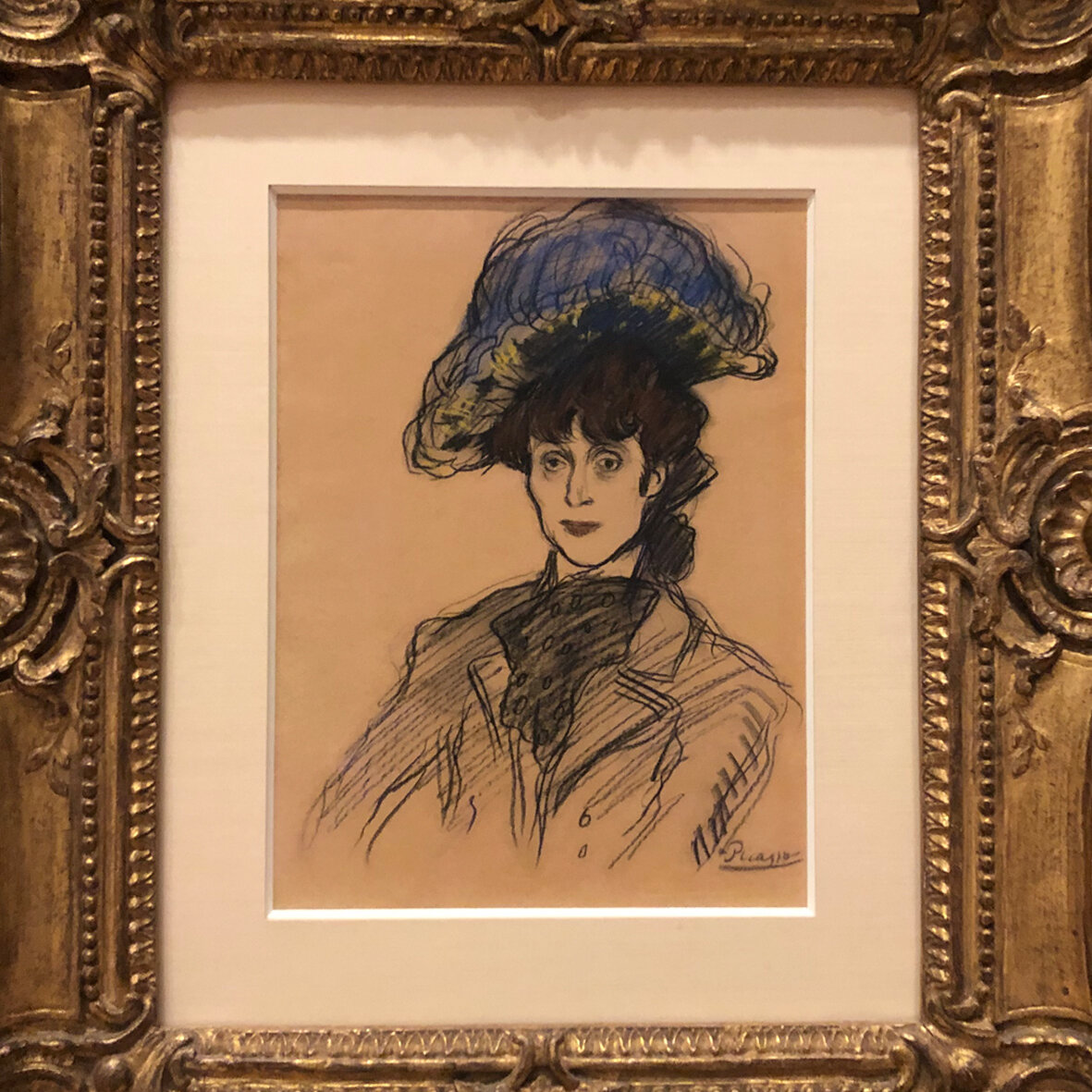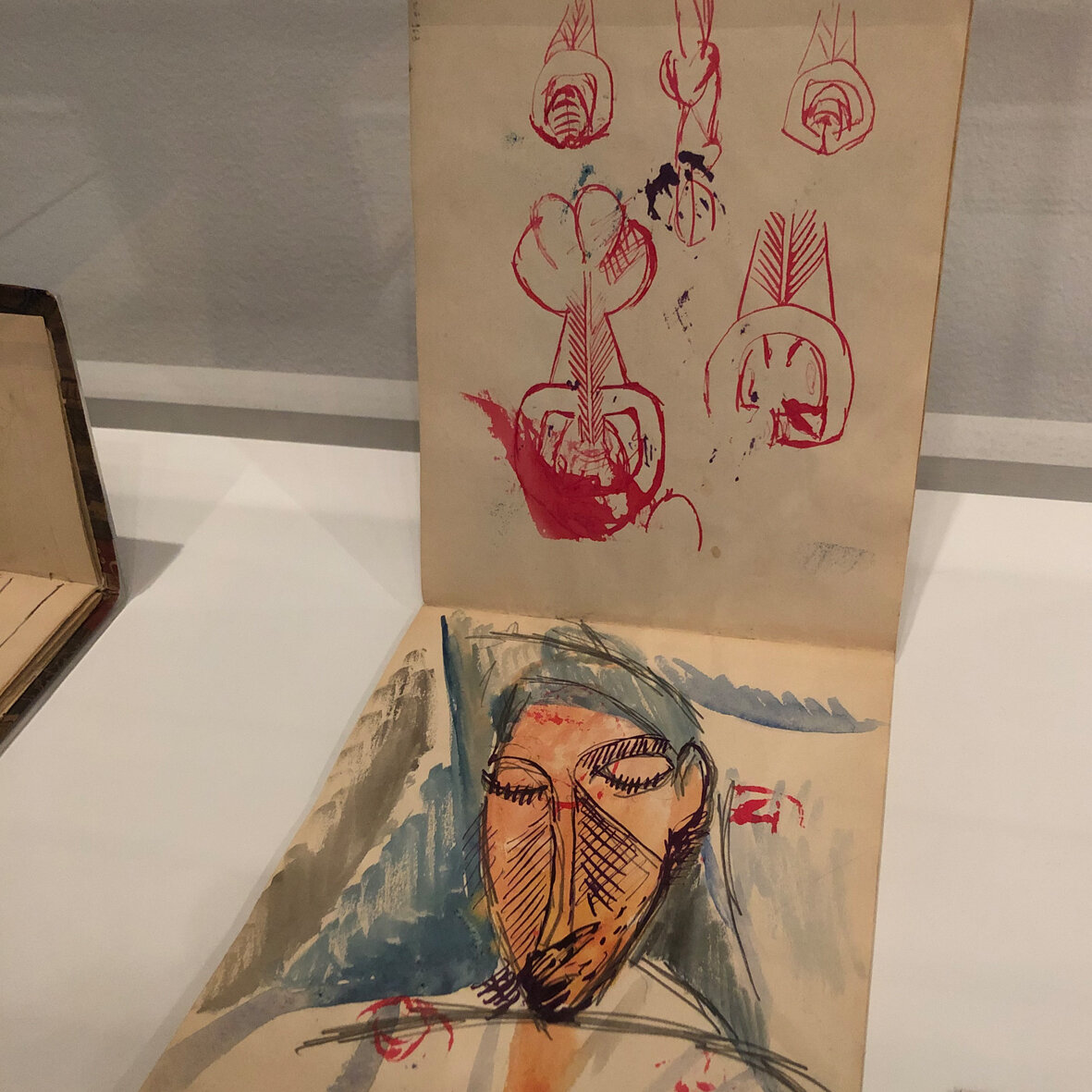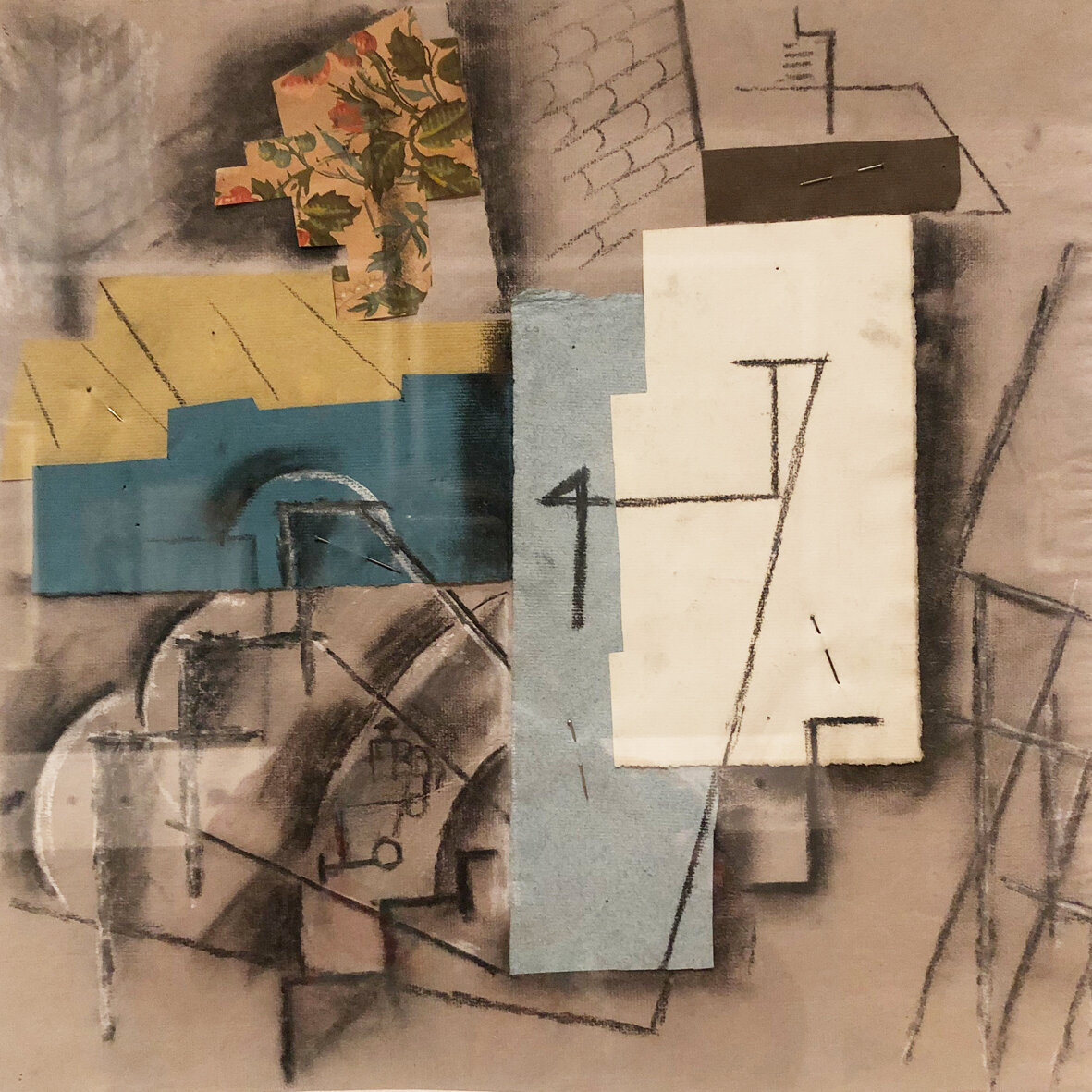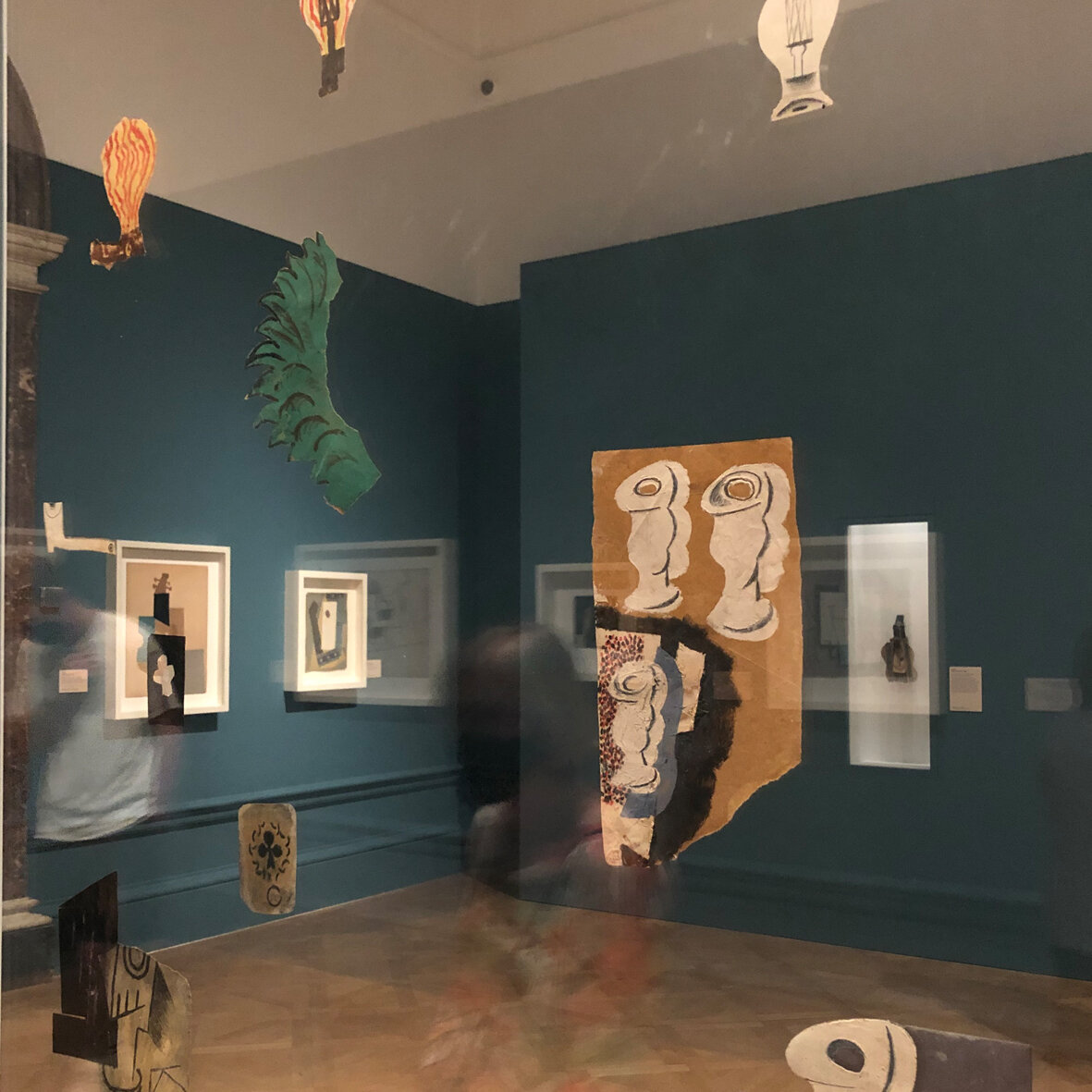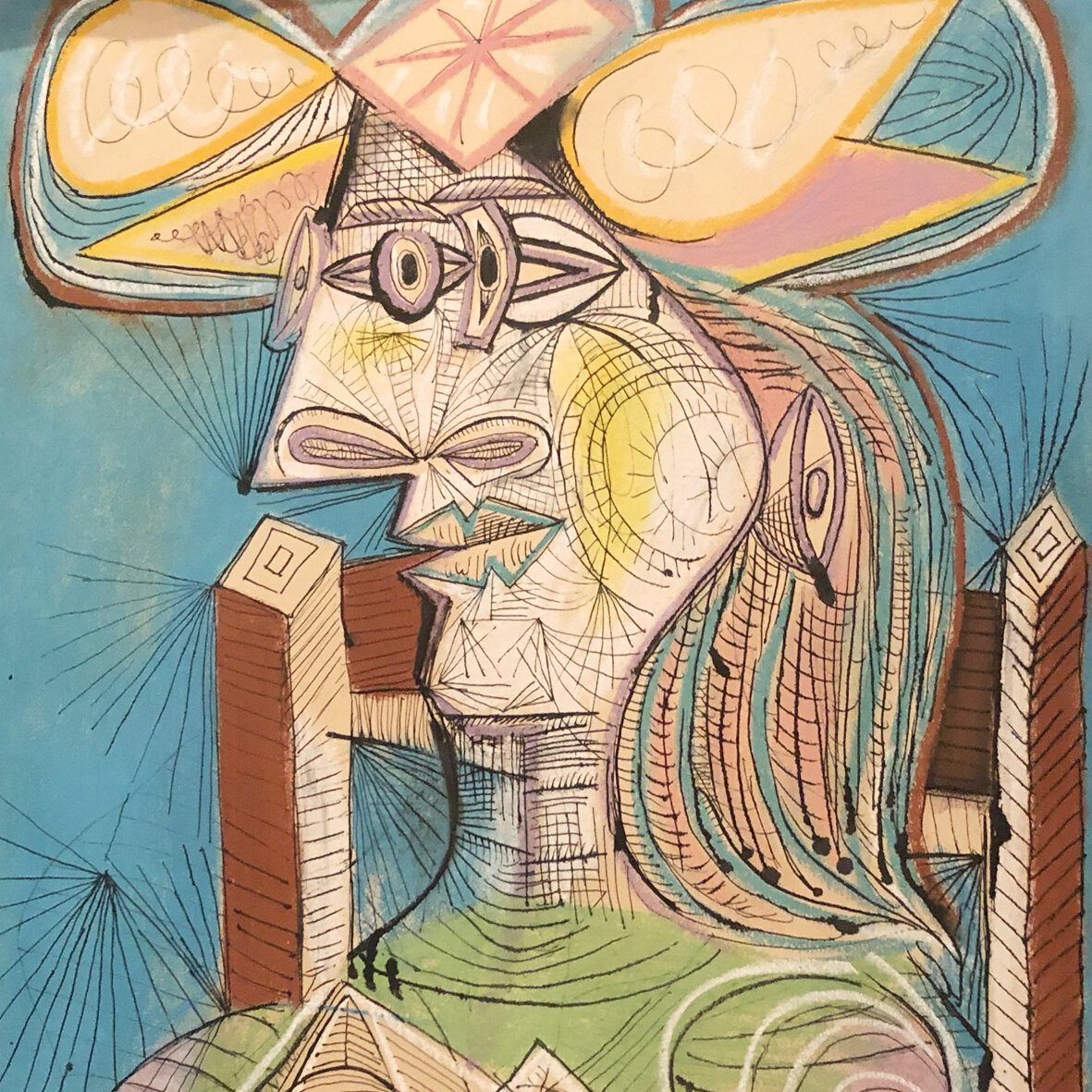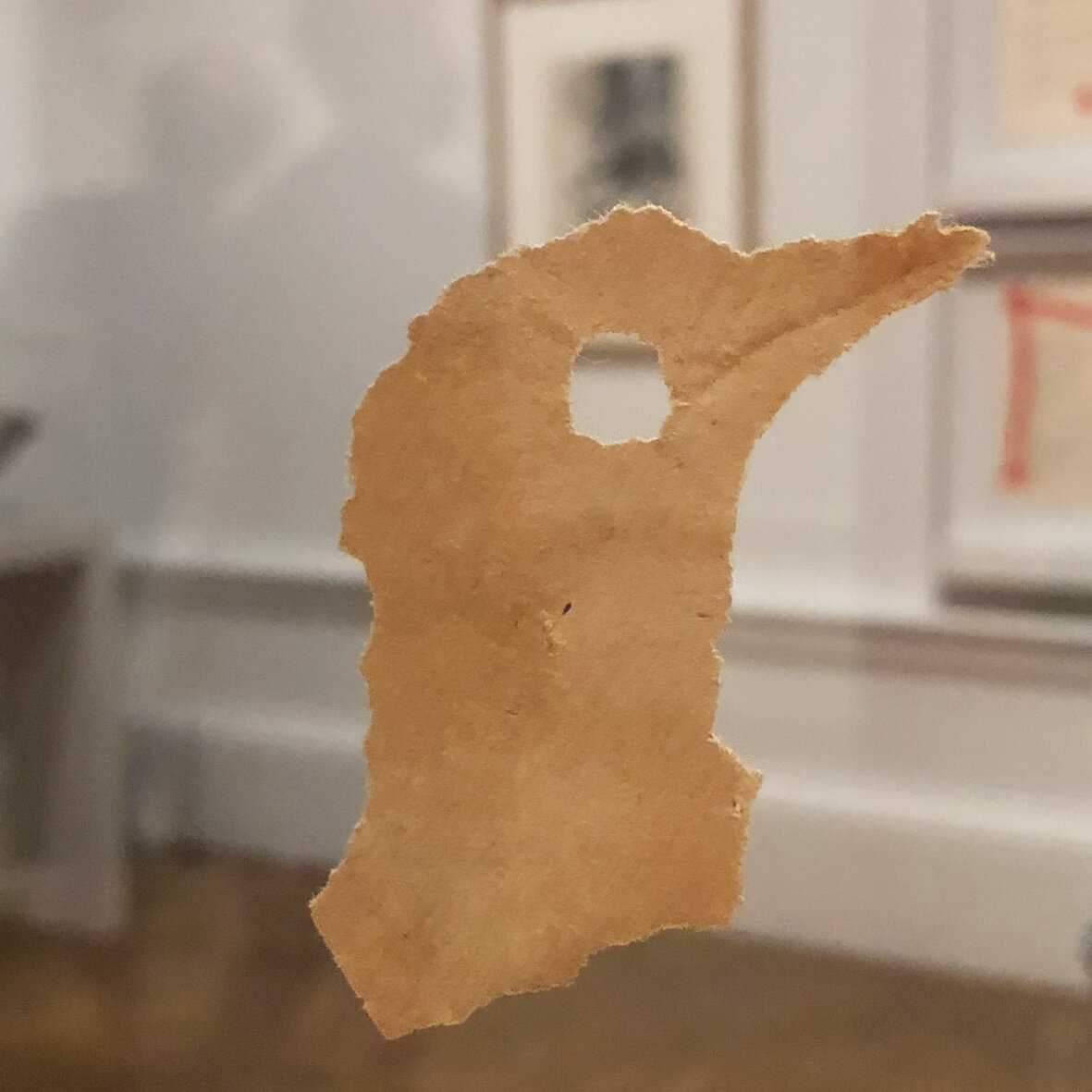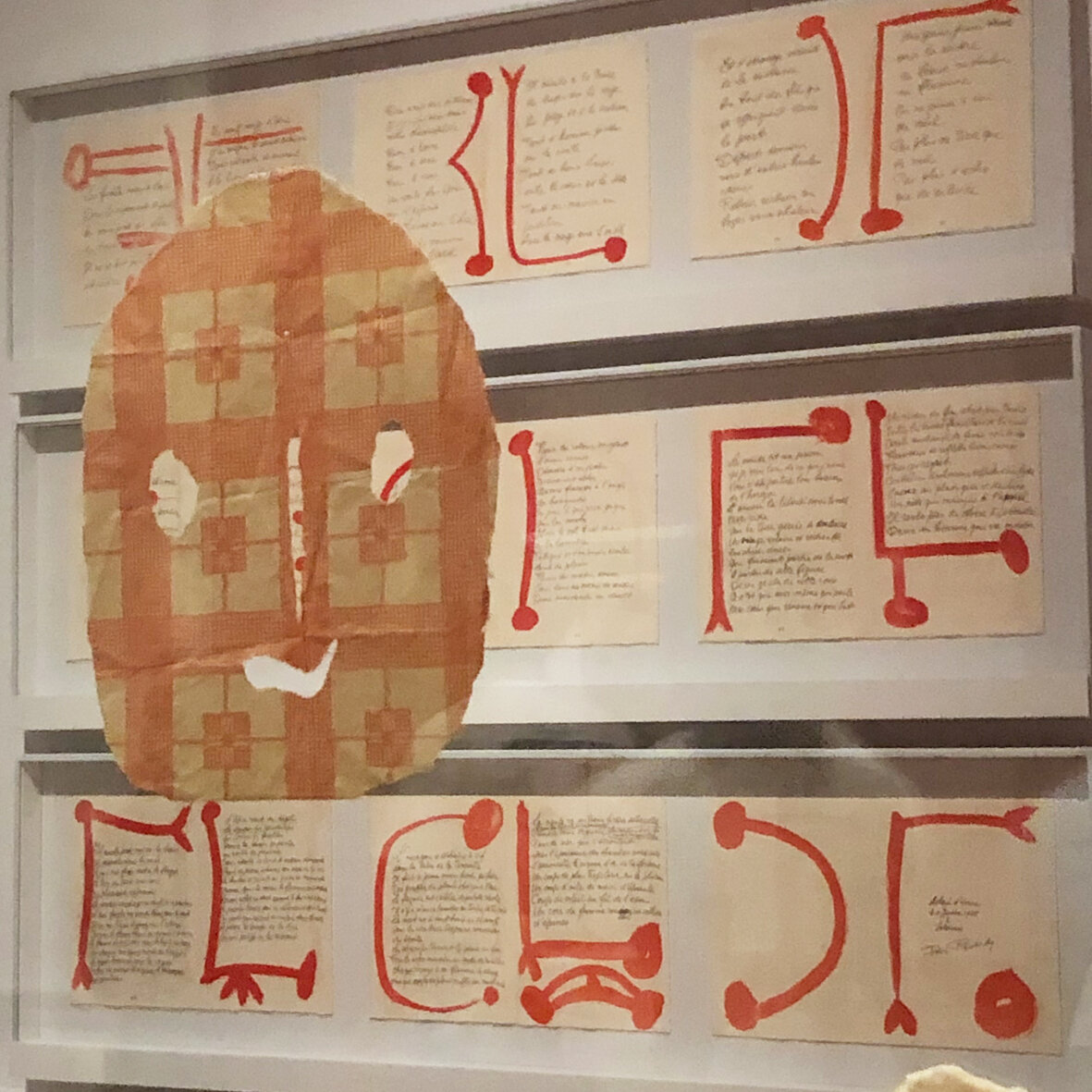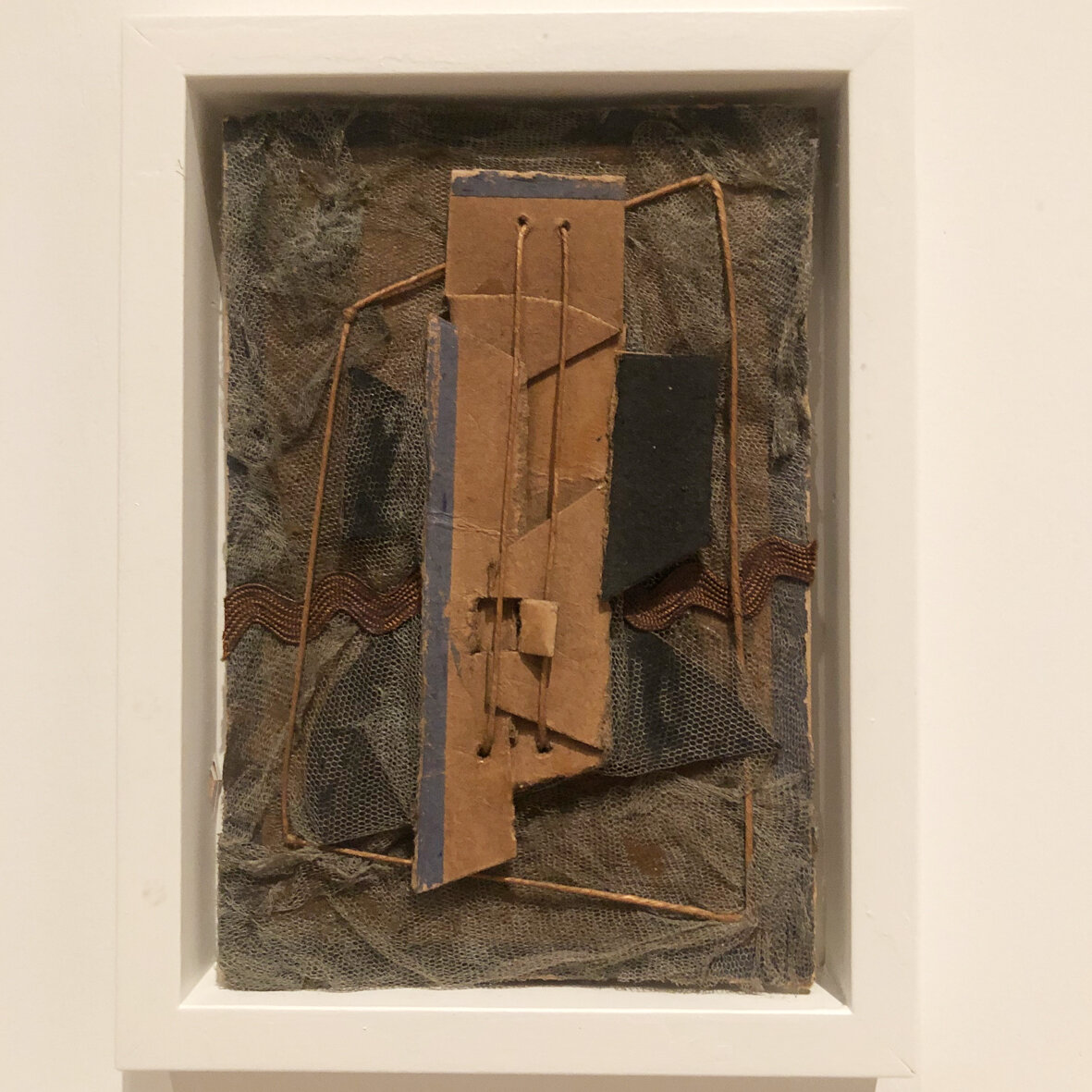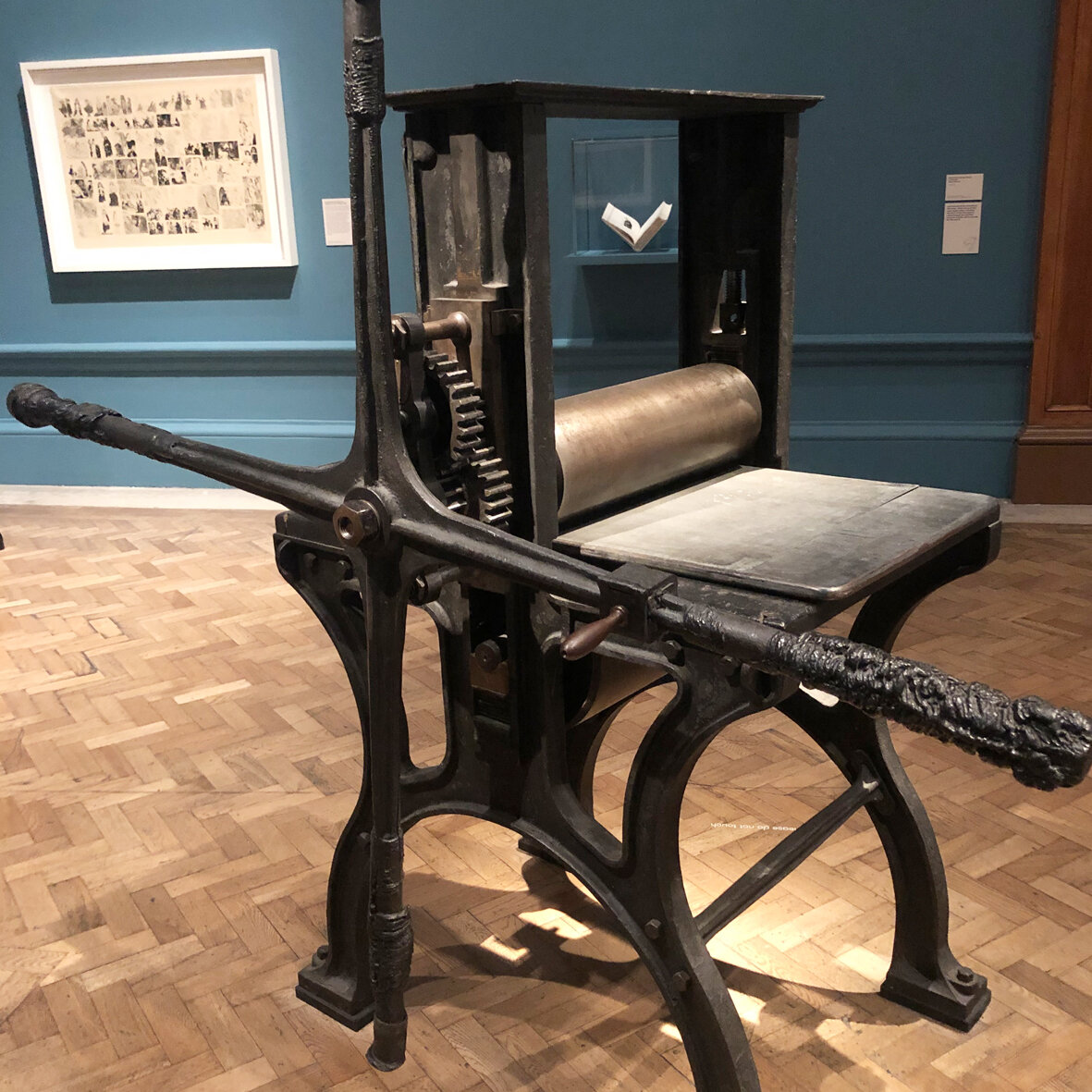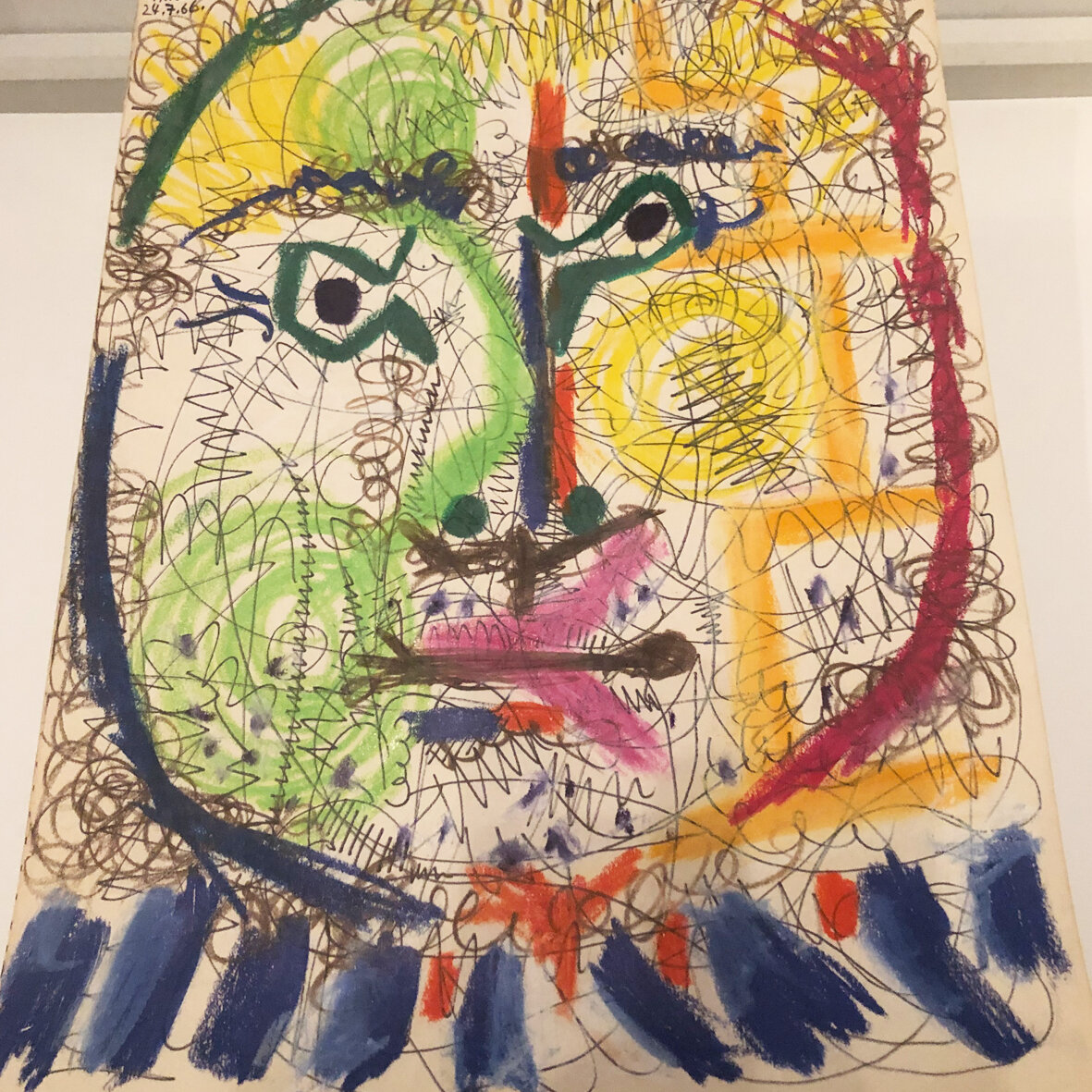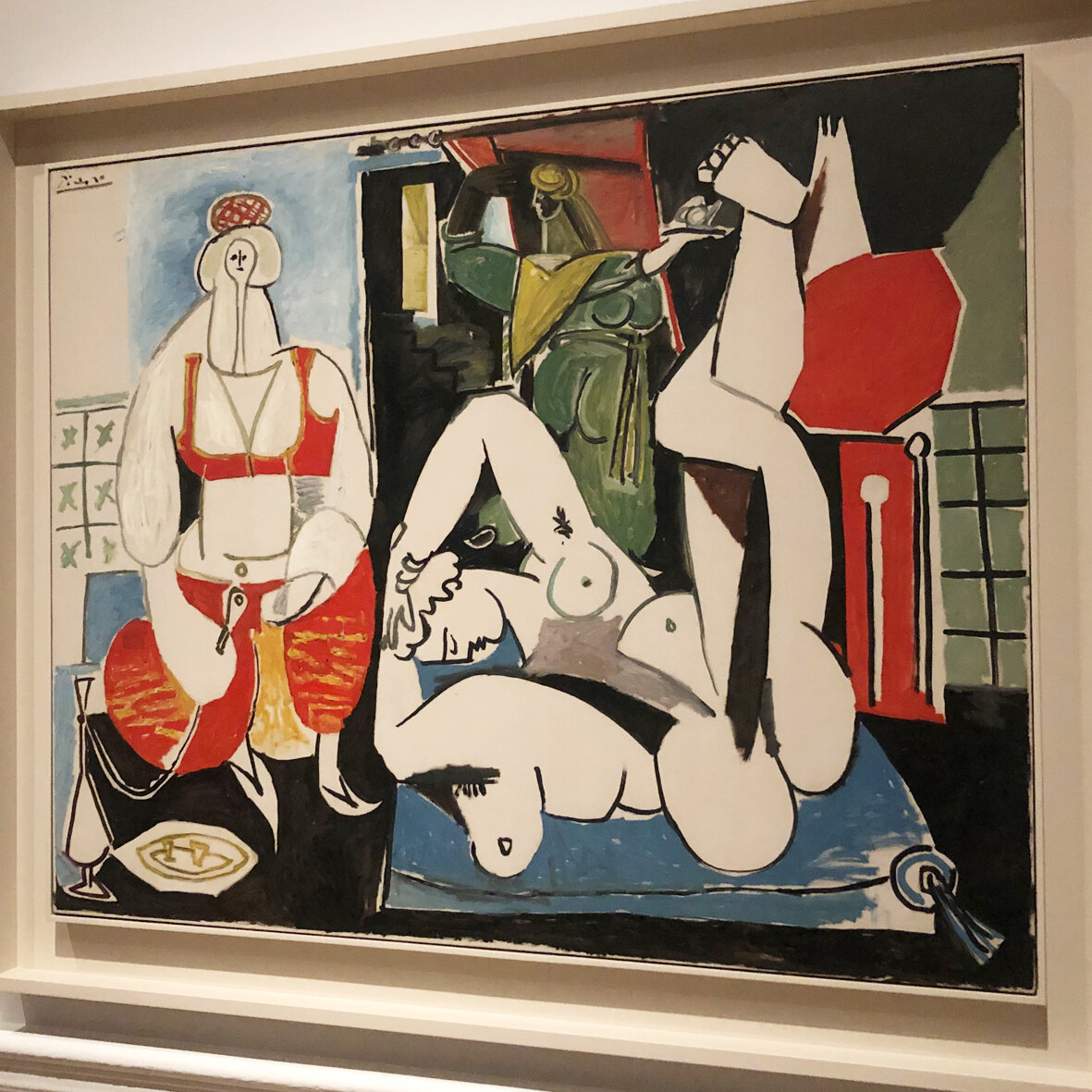My first trip into London for what seemed like an eternity happened last Thursday. The Picasso and Paper exhibition at The Royal Academy was meant to be my birthday treat back in April but I feared I would of missed out due to the lockdown. I was overjoyed to see that it had been continued but I wondered if I’d be able to snag a ticket when a few new ones were released for its last few days.
The newsletter pinged into my inbox and I quickly clicked the link to secure a ticket and I couldn’t wait. It was a very different London experience post lockdown, quieter trains and tubes, most people abiding by the rules and wearing a mask, however, some quite blatantly didn’t feel the rules applied to them.
I got the the RA a bit early and I finished my iced latte bathed in sunshine in the courtyard out front. All safety procedures were in place, hands were sanitised, mask tightly on and I entered the building.
The exhibition was large, 12 rooms dedicated to Picasso and his works. Starting with works from his blue period in the first room. I am going to state here that Picasso’s aesthetic is not really my favourite style of work. I absolutely appreciate what a genius he is and that his methods and choice of medium he chooses to work in, intrigues me greatly. As a paper artist myself, I wanted to see these elements of his work more than the paintings.
I loved the two little paper cut outs of the bird and dog, so simple yet so characterful. Also, you may recognise the lady in the hat as the same Parisian lady Toulouse Lautrec painted. Picasso was acquainted with lots of the famous impressionists including Monet and Van Gough. But the Blue Period (1901-04) was far from the cubist masterpieces he is most famously known.Hard times, poverty, family tragedy and a lack of confidence was channeled in to monochromatic work of various blues triggered by the death of his longtime friend and poet Carles Casagemas.
As you moved through the exhibition you were treated to insights in Picasso’s way of working. His sketchbooks and doodles showed how he was constantly consumed with ideas for his work and how he wanted to express himself. He develops his cubist style from 1909 after his Blue and African Inspired periods. How he applies it to the mainly but not exclusively female figures, the more dynamic and expressive his mark making is. Also, we see his use of collage and in particular his obsession with guitars and violins. I absolutely loved seeing these. The simplicity of the paper shapes and uses of various pieces of ephemera didn’t detract from the image or his cubist style. It is amazing to me how by simplifying a form it can have more impact. Less is most definitely more for me.
What I enjoyed seeing as I walked through the rooms was how Picasso didn’t limit himself to working in any medium and with any particular process. I smiled as I saw the felt-tip pen and crayon sketches, ideas on old newspapers and magazines and my eyes widened as I saw the ornate printing press and copper plates displayed next to their printed double. I am so involved in the process of making art that sometimes the destination isn’t as fulfilling as the journey but I felt that Picasso, using paper as a vehicle for his work was both inspiring and comforting. Final pieces, such a sculptures were conceived through many drawings and observations beforehand. His iconic weeping woman painting had many different versions before completion. Picasso’s heavily stylised figures, sometimes almost unrecognisable, I find harsh and unflattering to look at. Beauty is not in what he portrays but emotion through shape and colour. I began to understand him more as we moved through the rooms.
He worked on various collaborations, his distinct style shone through but harmonised with the work he was supporting. Cross over elements of being and artist and designer apparent and another connection I felt towards him. It was a pleasant surprise to see his stage set and costume designs. Also, to further highlight the processes he worked in, large carved wooden block printing tiles were displayed next to the final printed piece. Another insight into, not just how Picasso worked but how anyone would create what seems like a simple print. Picasso didn’t discriminate against materials and processes of working. You will see charcoal sketches, inked etchings pencil sketches, cut and pasted almost childlike shapes.
This was a real feast for the eyes and the first large collage to be displayed. Femmes a leur toilette, Paris, Winter 1937-38. Incredibly dynamic and rich in tone and texture as all the different patterned appears and drawings overlapped. With it being life-size it was as though you could step into that particular scene and mingle amongst the women.
My favourite piece of the exhibition came near the end. Reclining Nude Woman - 1955, was a large collage and painted piece that was both beautiful with a more subtle cubist style to the figure painted over layers of patterned paper. I loved that you could see the small pins used to connect all the elements together. It seemed unpolished and raw but still highly accomplished. I stood and looked at this piece for some time. If I had to choose one piece I would like on my wall, it was this one. A fitting way for me to finish my visit was to leave totally inspired and in awe of what I had seen.
There were parts of the exhibition I wasn’t so engaged with. His obsession with the mythological minotaur, part man - part Bull, was Picasso’s alter ego during the 1930’s. For surrealists, the minotaur was an emblem for them as it was the personification of forbidden desires. It does give you an insight into how Picasso viewed himself and the direction he wanted his work to travel in, exploring the broader spectrum of classicism would influence much of his future work. He emphasised his Spanish heritage often in works, the bull itself was a popular image and in 1937 his Anti-war painting Guernica is also referenced in the exhibition. Picasso loved animals, more than humans and he would reference them as much as possible.
Overall, the exhibition was very well curated, it was easy to flow through each period and understand the relationship Picasso had with paper but also the added extras that delivered much more than just this focus. It was a pleasure to view it with such few people there due to the restrictions and that meant you could spend time really looking without the pressure of keeping on moving to stop a swell. I wanted to leave feeling inspired, with my very culture starved and detached state of mind re-attached and tuned in to the world again. I wanted to learn more about Picasso and get a sense of the man behind the work. This exhibition delivered all of that for me, I am grateful I could see it. For those who didn’t get the chance I hope the images can take you on a similar journey.








